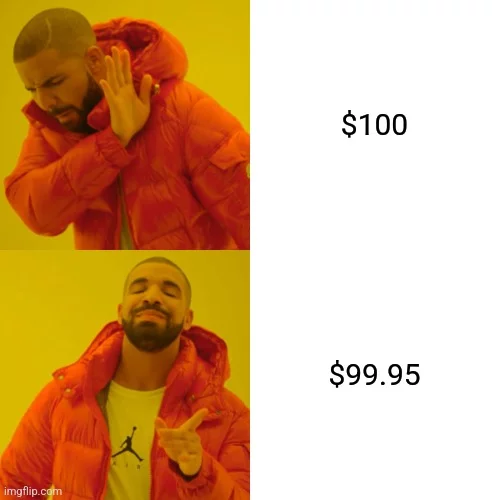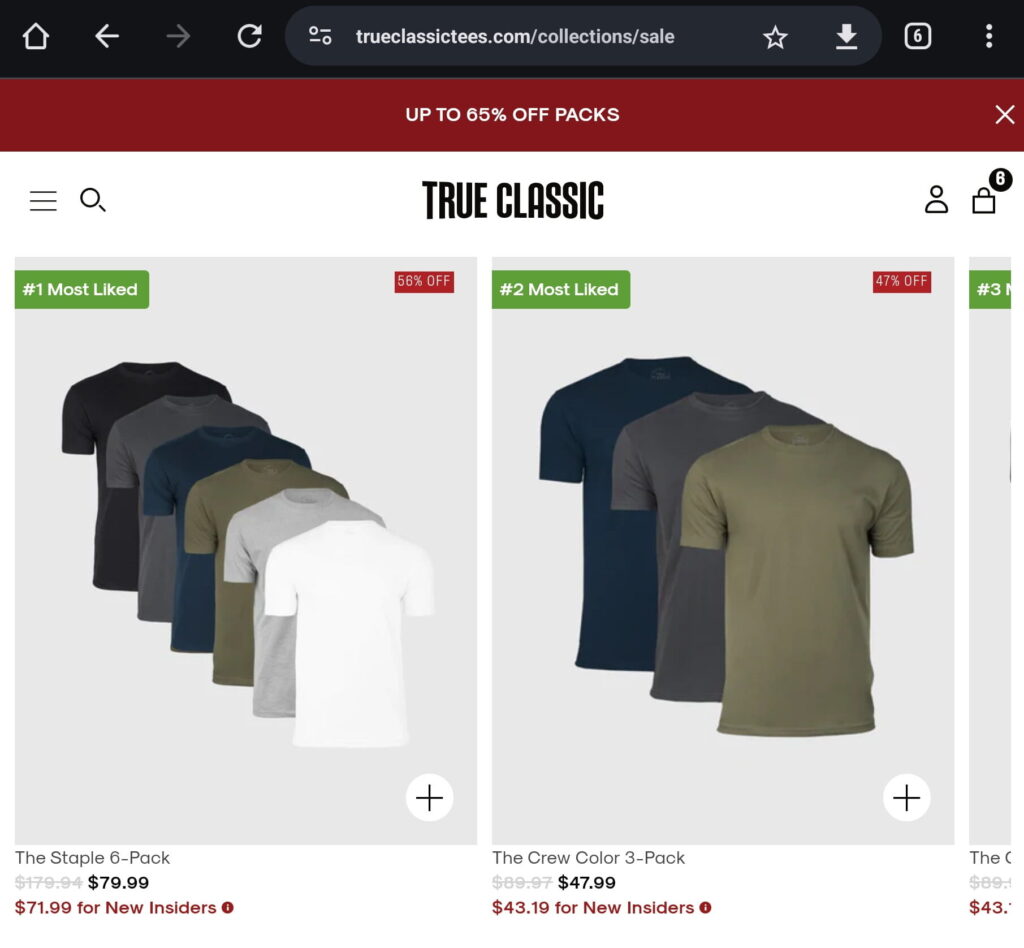The Power of the Extra Cent: How Rounding Prices Can Boost Your Sales

Today, I want to dive into one of those details—how rounding prices (like .99 endings) can make a surprisingly big difference in your sales.
The magic of numbers: Why .99 Works
$99.99 feels cheaper than $100, even though the difference is just a penny.
This happens because our brains simplify numbers. According to the Fuzzy-trace theory, people focus on the overall impression, or “gist,” rather than the exact value.
So, $99.99 registers as “under $100,” making it seem like a better deal. Our brains latch onto these small differences and perceive them as more significant than they are. It’s this cognitive bias that makes customers feel like they’re getting more value for their money.

One of the most important players applying this strategy is our beloved True Classic, and it works tremendously. They take a very aggressive promotional strategy, pushing harder, as they are one of the most data-driven e-commerce companies we know. They take price elasticity seriously and constantly experiment different ways to increase conversion rate. So believe me, this is a lever you can push or pull to optimize promotional periods or clearance strategies.
What are the cons?
First, while that one-cent difference seems trivial, it adds up quickly when you’re dealing with millions of orders. Remember the plot from the Superman movie where a character siphons off fractions of a cent from transactions to amass a fortune? It’s a funny reference, but in real life, those pennies can have a serious impact on your bottom line—sometimes in ways you didn’t expect. The key is to always understand if, for your brand, that small loss in revenue is offset by a conversion rate significant enough to cover the cost. Spoiler alert: in most cases, it does.
Another drawback is how this pricing strategy can affect your brand’s perception. Ending prices in .99 can sometimes make your brand feel cheaper, too promotional or give the impression that you’re offloading products that aren’t selling well. If your brand positions itself as high-end or premium, this approach might not align with your image and could even impact your perceived value.
And What About Discount Numbers?
Rounding prices and discounts can either work for you or against you, depending on your audience and your approach. Some people love the precision of a discount like 17% off—it feels calculated, thought-out. But for many, simple, round numbers like 20% off are easier to digest and more appealing. The key is knowing your customers and how they think. Are they detail-oriented or more of a “go with the flow” crowd? Tailor your approach to fit.
So, Why Does This Matter for You?
Understanding these little psychological tricks can seriously up your pricing game. Whether you’re running a sale or just setting your regular prices, thinking about how your customers perceive those numbers can make all the difference. And in the competitive world of e-commerce, every little edge counts.
Next time you’re tweaking your pricing strategy, remember—sometimes, it’s the smallest changes that lead to the biggest results. And who wouldn’t want that? But remember, not all brands work equally, and not all e-commerce audiences or products respond the same way to a given stimulus. If it works for True Classic, Gymshark, or other big names, it means that there’s potential in that approach, but it may not be your path.







